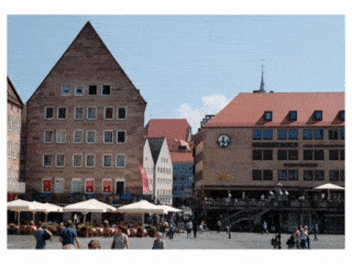Ernst Schneppenhorst
No strolling – but street protest!
On February 12th 1933 – not even two weeks after Hitler was proclaimed chancellor – there were still 60.000 people rallying against fascism on Nuremberg’s main square. With this, they followed a call to action by the SPD (the social democratic party, the strongest of the working class parties) and other related organisations. Three weeks later, only days before the last semi-free elections regarding the Reichstag (the German parliament), the social democratic movement managed to mobilise 30.000 of its followers in Nuremberg to a mass meeting supporting the republic. At this gathering, Ernst Schneppenhorst, member of parliament for the SPD strongly militated against the rising fascism – at a time, when it already was establishing its reign of terror.
While many remained silent when state power was given to the Nazis, long-term trade union activist Ernst Schneppenhorst (*1881, carpenter) didn’t mince matters. He used the mass gathering of 30.000 antifascist protesters on march 2nd 1933 to expose how the Nazis used the Reichtagsbrand (the German parliament building went off in flames on February 27th) to justify the persecution of their political opponents. For years, Schneppenhorst tried in vain to move his party to take stronger action against the fascists rise to power. In 1932, right-wing chancellor Franz v. Papen deprived the social democratic government of Prussia of its power and by that disestablished one of the most important strongholds of the Weimar Republic. Schneppenhorst pleaded for a general strike but was let down by his party (the social democrats) who only opted for a “protest-like stroll” through two of Nuremberg’s eastern urban quarters.
Schneppenhorsts key position as antifascist activist was soon known by the authorities and immediately after the ban of the SPD, he was forced to flee from the henchmen of the SA. He managed to go into hiding and to build a network between antifascist organisations, cells and single persons. These were involved in a conspiracy aiming at killing Hitler and overthrowing the nazi rule on July 20th 1944. Unfortunately, the coup failed. Schneppenhorst was arrested and interned in the concentration camp Sachsenhausen (near Berlin). On April 24th 1945 – only two weeks before the Nazi-regime surrendered to the Allies – he was shot by a shooting squad of the SS.

 Deutsch
Deutsch
